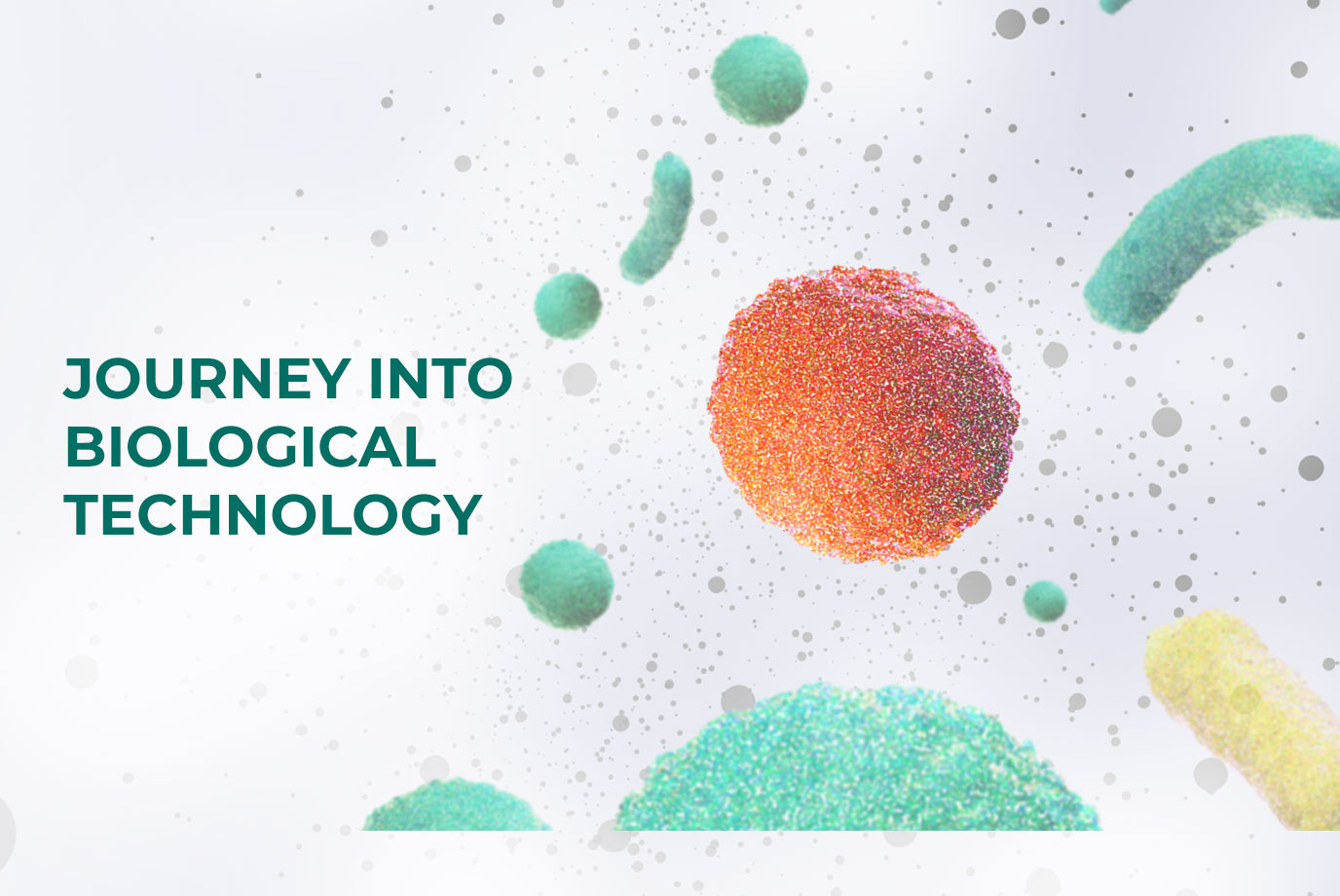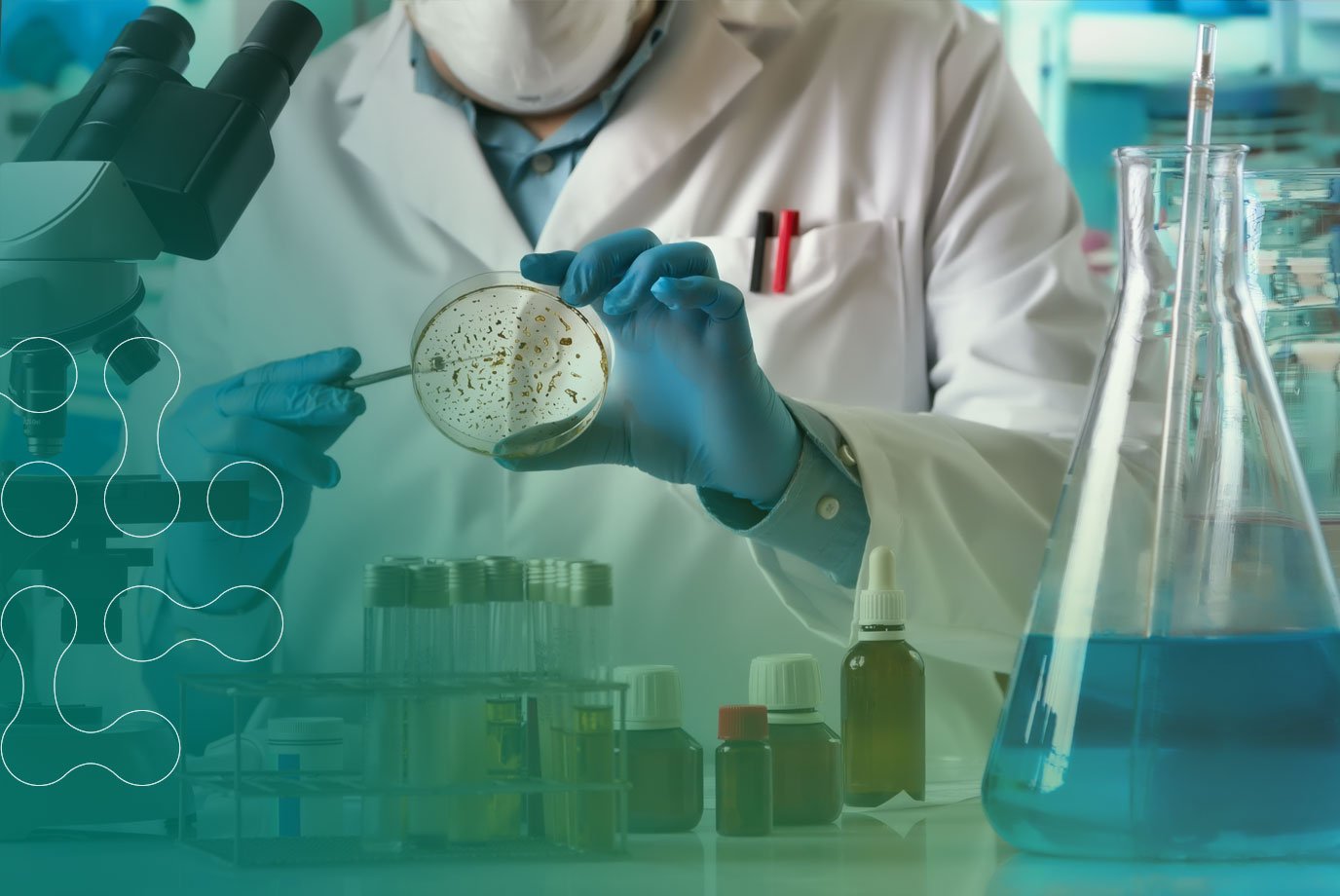Today is World Microbiome Day , an annual global event celebrated on June 27th to raise awareness about the significance and potential of the unsung heroes of our planet, microbes, also known as microorganisms.
Microbiomes are a community of microbes, and although they are invisible to the naked eye, they play an essential role in maintaining the balance of life and the health of ecosystems, human beings, animals, and the environment.
Understanding the diversity of microbes is not only fascinating but also crucial for numerous fields, including environmental science, medicine, agriculture and industry.
Environmental Champions: How Microbes Support Sustainability
Microbes can be found in almost every habitat on Earth, from the depths of the oceans to the highest mountain peaks. They are incredibly adaptable and can thrive in extreme conditions inhospitable to most other organisms. They play crucial roles in various ecosystems, including:
- Nutrient Cycling: Microbes are essential players in the constant cycle of nutrients across various ecosystems. They can decompose organic matter, such as dead plants and animals, helping to return vital nutrients such as nitrogen, phosphorus, and carbon into the environment. This process helps maintain soil fertility, promotes plant growth, and supports regenerative agriculture.
- Bioremediation:Certain microbes can degrade or detoxify pollutants in the environment through a process called bioremediation. They can break down contaminants like oil spills, pesticides, and industrial waste, converting them into less harmful substances. Microbial bioremediation offers a sustainable and cost-effective approach to cleaning contaminated sites and restoring ecosystems.
- Carbon Sequestration:Microbes in soils, mainly bacteria and fungi, contribute to capturing and storing carbon dioxide from the atmosphere. This can be stored in biomass or soil, which acts as a long-term carbon sink and helps mitigate climate change by reducing greenhouse gas concentrations.
- Soil Fertility:Soil microbes, mainly bacteria and fungi, contribute to the fertility of agricultural soils. They help decompose organic matter, releasing nutrients for plant uptake. Additionally, some microbes form mutualistic relationships with plant roots, such as mycorrhizal associations, where fungi assist in nutrient absorption and enhance plant growth. This occurs through the promotion of healthy soil ecosystems with microbes supporting sustainable agriculture and food production.
- Symbiotic Relationships: Microbes can form symbiotic relationships with plants and animals, benefiting both parties. For example, nitrogen-fixing bacteria in root nodules of leguminous plants convert atmospheric nitrogen into a form that plants can use. This enhances soil fertility and reduces the need for costly and environmentally damaging synthetic fertilisers.
- Bioenergy Production:Microbes contribute to sustainable bioenergy production through anaerobic digestion and microbial fermentation processes. Anaerobic bacteria can convert organic waste, such as agricultural residues and wastewater, into biogas. This largely consists of methane which can be used as a renewable energy source. Microbial fermentation is used to produce biofuels, such as ethanol, from plant biomass.
- Waste Management: Microbes are instrumental in waste management processes. They are used in wastewater treatment facilities to break down organic matter, remove pollutants, and purify water.
Exploring Microbial Species
The number of microbial species on Earth is enormous; each has unique characteristics and capabilities. Recognising these differences is critical when assembling a bank of microbial strains for product development, like the ones we use at Biological Preparations.
By unravelling the different types and their roles, we can better understand how these microorganisms interact with their environment and other organisms and harness that power to create sustainable, high-performing products.
For example, the bacterium Bacillus anthracis is the causative agent of anthrax, and Bacillus cereus will give you a nasty case of food poisoning. However, the friendly cousins of this species, such as Bacillus subtilis, are globally recognised as perfectly safe and widely used in biotechnology, including as direct-fed animal and human probiotics.
Something more familiar when comparing strains of the same species is Escherichia coli (E. coli). This bacterium is a natural and essential part of the population that inhabits our gut – it's safe to say that our gut could not function properly without it. Other strains, such as E. coli K12, are also very safe and are used in human skin trials. However, strains such as E. coli 0157, contracted from contaminated food and water, or infected animals and people, can cause enteritis and nasty complications relating to the blood, kidneys, and nervous system.
These differences are determined by many factors, for example, whether certain species or strains produce adhesion factors allowing them to colonise human tissues, if they produce toxins, and, critically, which enzymes they can produce.
Tiny Warriors: The Many Applications of Microbial Technology
Cleaning and Hygiene
- Microbes, specifically bacteria, produce enzymes that "feed" on organic matter in the form of dirt, grease and odours by breaking it down into smaller molecules and absorbing it into their cells. This makes for easier cleaning and superior odour control by removing the odour directly from the source.
Microbes can multiply and spread across surfaces rapidly, creating what's known as a biofilm. This enables them to get deep into surfaces, such as carpet fibres, and remove odours from areas where traditional cleaning products can't reach. So long as there is a food source present, the biofilm will thrive, providing long-lasting residual cleaning protection.
At Biological Preparations, we've analysed hundreds of strains to identify those that produce the most effective enzymes to tackle the most common cleaning challenges and include them in our BioHygiene range, such as:
- Amylase breaks down starch
- Cellulase to break down cellulose e.g. vegetable matter
- Lipase breaks down fats, oils and greases
- Protease to break down proteinaceous matter e.g. meats and cheeses
- Uricase to break down uric acid
Find out more about microbial cleaning here
Bioremediation
This area of biotechnology uses bacteria to remove pollutants from wastewater and other environments. The technology works similarly, whether fat, oils and grease (FOG) from hospitality settings, wastewater from wastewater treatment plants (WWTP), or detoxifying pollutants such as pesticides from agricultural runoff.
Microbial bioremediation carries numerous sustainable benefits and dramatically reduces toxins in marine environments.
Discover more about bioremediation here
Agriculture
Microbes bring many benefits to farming from both a sustainable and a practical point of view. Soil fertility, nutrient cycling and nitrogen-fixing bacteria are all essential for the growth of successful crops whilst preventing the need to use fertilisers that can pollute waterways. If farmers use fertilisers, bioremediation can remove harmful runoff from essential waterways.
Bioenergy production has seen some farms run almost entirely on biogas, vastly reducing the farm's carbon footprint.
Biological Preparations has extensively researched how microbes can be utilised in agriculture, specifically silage and biogas inoculants.
Silage is a food source for ruminant animals, most often cattle, made from green foliage and other crops preserved through fermentation. The forages most often used are grass, maize and cereal crops.
Silage spends long periods in silage clamps, and bacteria-based inoculants can produce the ideal fermentation profile while keeping it cool and stable. They also help improve feed value once used to feed the cattle.
Find out how we support agriculture with microbial technology here
Microbial Sustainability
These tiny, microscopic organisms that surround us inside and out can make genuine changes. It is almost impossible to measure their impact on our planet every day. Unlocking the power of microbes has already helped BioHygiene make substantial reductions in scope 3 emissions for organisations up and down its supply chain.
Among all sectors mentioned, using microbes as active ingredients massively reduces the environmental impact caused by the end user.
In the cleaning and hygiene sector, microbes are helping to replace undesirable and damaging ingredients such as traditional surfactants and solvents, giving users a choice to use effective cleaning products that don't cause damage to oceans, the wider environment, and the user. With several traditional ingredients also starting life as a petrochemical, microbial-led products can result in substantial CO2e reduction through both their usage and the diminishing demand for these damaging alternatives to biotechnology.
As technology advances, our understanding of bacterial diversity will undoubtedly deepen. New techniques will emerge, allowing researchers to explore previously uncharted microbial territories. Furthermore, interdisciplinary collaborations will become increasingly important as scientists from different fields work together to unravel the complexities of bacterial communities.
With each discovery, we will better understand our microbial partners and their critical role in sustaining life on Earth.
This year's theme for World Microbiome Day is microbes and food. As a result of our long working relationship with microbes, we have a previous blog we put together which looks at how our digestive system utilises microbes in a very similar way to our cleaning products.
Learn more about how our body's ability to break down food below.




